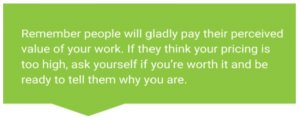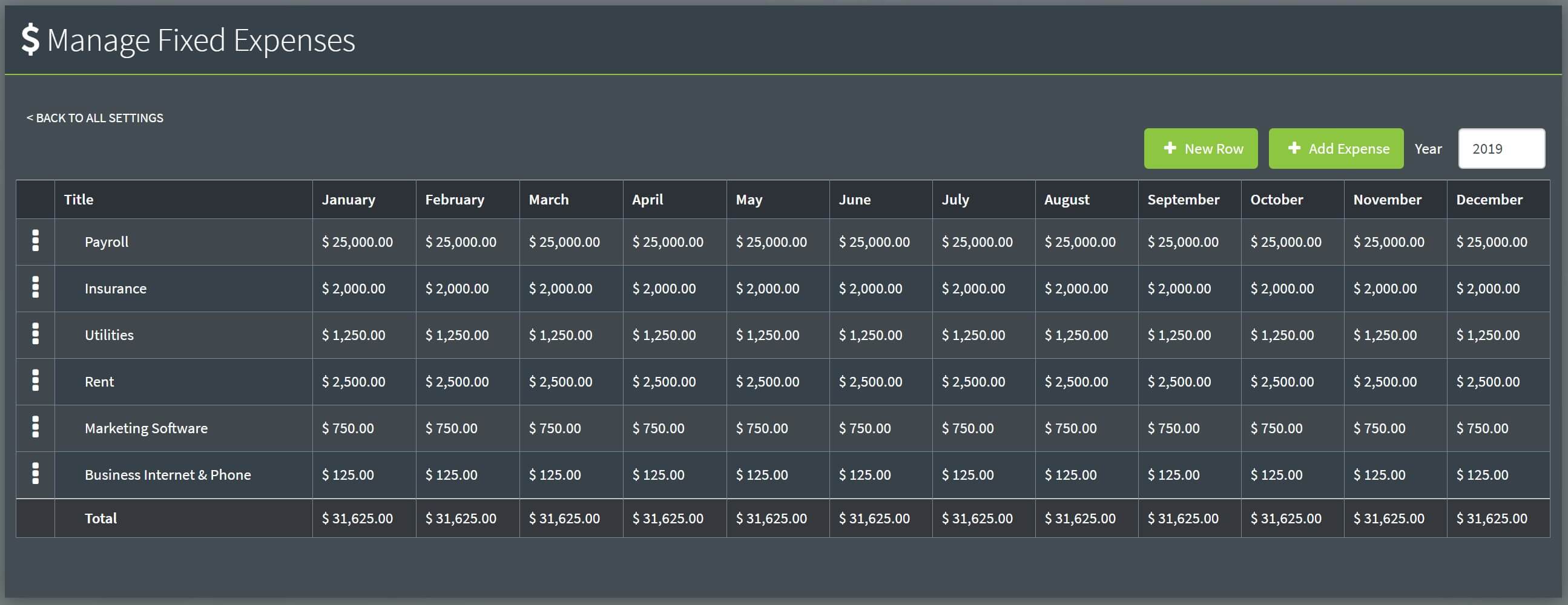-
How to Set Prices for Your Small Business in 5 Easy Steps
in Small Business Management on December 7, 2020
Share with your friends or professional networkPricing is a common thorn in the side of freelancers and small business owners. You don’t want to price yourself too high, but you don’t want to leave money on the table either. How many times have you quoted a project, and your customer immediately jumped to approve it? I hate it when that happens. And have you ever been forced into a price war because someone else will do it for less? Not fun either. When you own a small business, even if it is project-based, there are a number of ways you can deal with these issues. In this post, we’ll give you some ideas on how to set prices for your small business.

Step 1: Know your fixed costs.
You should take into account the fact that you have fixed expenses. Calculate all of them for each month of the year, so you have an idea of what you absolutely need to cover and when there may be spikes. In the image below, FuelGauge provides a central location to record fixed expenses as well as an easy-to-digest snapshot of them.

Step 2: Get a handle on project costs.
Sometimes called your cost of goods sold or cost of sales, your project costs include all the costs you incur to complete the job. By keeping a record of these, you will get a better idea of how much each type of project costs you. With this information, you’ll have a better understanding of how to set your prices.
Step 3: Check out competitor pricing.
Do a little research to find out what others charge in your industry. Here are a few ways to gather intel:
- During the bidding process, you might offer to help your prospective customers make sure they are comparing apples to apples and ask to see other bids.
- After being awarded or not awarded a project, you can ask about where your pricing landed among the competition.
- At times, you can find pricing information right on your competitors’ websites.
- While review sites vary by industry, check out sites such as Google My Business, Quora, G2, and HomeAdvisor and look at what their customers are saying. In some instances, the review sites may also provide pricing information upfront.
Step 4: Understand markup vs. margin, and use margins.
You want to set your prices based on the profit you need to make. To better understand how profit percentages change depending on whether you use markup or margin formulas, let’s take a look at what these formulas are.
The margin formula measures how much money you keep after paying expenses.

And markup measures how much more you sell something than the amount you pay for it.

If these sound similar, it’s because they are correlated. However, you need to know that when you mark up your projects, the market is a factor. The market drives costs up or down and may not take into account some indirect costs associated with the project. That’s why setting prices based on a certain markup can result in you leaving money on the table. Consider the relationship between markups and margins as shown in the table below. If you decide to mark up your project by 15%, you are actually only making a 13% profit margin on the project.
Markup Margin 15% 13% 20% 16.7% 25% 20% 30% 23% 33.3% 25% 40% 28.6% 43% 30% 50% 33% 75% 42.9% 100% 50% Step 5: Gather data and tweak pricing accordingly.
You need to gather data to get benchmarks. It’s especially important to see trends so that you can create economies of scale. If costs are trending up, you’ll likely want to raise pricing. You need to see if you have the capacity to take on new projects or if your business can survive projects being put on hold, and then adjust your pricing accordingly. Having one place to see and predict your cash flow can be extremely helpful with these key business decisions. FuelGauge cash forecasting software in the cloud, is just that. You can get the big picture and the details you need to set or adjust your pricing in one convenient, easy-to-use software, 24/7 from your internet-enabled device.
Managing your costs is key to several of the pricing steps in this post. And knowing your value is crucial to getting it right. How to set prices is one of the most important questions you will encounter in your business and it’s one that you may revisit often. Stay tuned for more, and check out our other small business resources.